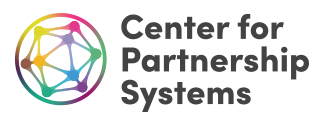This article was originally posted on the MAHB Blog, a venture of the Millennium Alliance for Humanity and the Biosphere.
Geoff Holland – For thousands of years, the human culture has been shaped by dominance and competition. Why is that paradigm no longer tenable?
Neil Takemoto – Because there will be nothing left to dominate. Referencing the work of Riane Eisler, the global economy is androcratic, a social system ruled or dominated by men. An androcratic economy consists of the market economy, the illegal economy, and the government economy. It excludes economies that are gylanic, a social system based on equality of women and men, which includes the household, unpaid community, and natural economy. Families, communities, and the environment will be further dominated as less important, resulting in a domination economy where the richest 10% own 76% of all wealth, while the poorest half of the global population owns just 2%. It will only continue to become more dominant until it starts to become more gylanic.
GH – In dominance-driven social design, men are in charge, men make the rules, women are subjugated, and nature is exploited with no concern for consequence. How does a focus on cooperation and gender-equal partnerism change that?
NT – In addition to the inclusion of the six basic economies instead of three, the following principles will change the culture from androcracy to gylany: A shift from “in-groups and out-groups” and inequality to “everyone matters” and equality. A focus on “hierarchies of actualization” that reward those who actualize the most people, away from “hierarchies of domination” that reward those who control the most. You will see an increase in liberty and expression versus power maintained by force and fear, where care is valued economically in the six gylanic economies, and not ignored as in the three androcratic economies. Human flourishing and creativity become the norm, instead of the violence and abuse we are witnessing.
GH – Humans are the Earth’s apex species. Do our intelligence and self-awareness obligate us to work together in the best interests of each other and of the natural world on which we all depend?
NT – The problem is that men often view themselves, consciously and unconsciously, as the apex species over women, if you look at leadership positions around the world, not to mention language, religion, and media. It is up to men and women to learn to work together in the best interests of each other, and the natural world will benefit as a result, because the natural world is a gylanic priority, one of the six gylanic economies.
GH- How are governance, commerce, and finance evolving to encourage more cooperation and gender-equal partnerships on a global scale?
NT – The centralized global economy is institutionalized. Men will not give up control in a system designed to reward control. It’s about developing an entirely new system altogether, one that is gylanic at its core. 12,000 cryptocurrencies are being developed in a decentralized, distributed economic frontier. It only takes one of those to be a successful gylanic global currency to allow people to shift to a gylanic economy and culture.
GH – Talk about public-private partnerships and employee ownership in business. How do those economic models serve the greater cultural interest?
NT – Public-private partnerships are essentially market economy and government economy partnerships, and are still under the domination culture economy. The growth is in seeing partnerships between those two plus the household, unpaid community, and natural economies. Employee ownership is a step towards the first partnerism principle of “everyone matters”, and the primary principle of “impact”: projects that are primarily designed, governed, and owned by communities, as defined in Real Impact by Morgan Simon. It is no coincidence that employee-owned companies, like the Mondragon Corporation in Spain, are more gylanic and impact-minded than hierarchical companies.
GH – You are an architect by training. How can architecture and design foster cooperation and partnership?
NT – It’s more a matter of who is doing the architecture and design. In a domination culture, our built environment is architected and designed to serve the needs of those in control, namely developers, corporations, and governments, which are often driven by profit or politics. It’s not difficult to argue that our built environment in the last 100 years reflects that. I would love to see architecture and design in the hands of a gylanic society, serving the needs of the people in the community, designed, governed, and owned by the community, as previously stated. The kind of architecture and design that emerges will most likely result in a built environment that is human-scaled, walkable, integrated with nature, supporting local businesses and community gathering spaces, and featuring more natural building materials and biophilic design.
GH – Every corner of our world is connected now in real-time as never before. What are the opportunities and the pitfalls that go with that?
NT – The opportunities are that communities can be much more responsive in serving their individual and collective needs, in greater numbers, and across more boundaries. This is a significant advantage when the many are in contradiction to the few. The pitfalls are that domination culture can do the same to serve their own needs, if power and money are allowed to dominate over the will of the people.
GH – Do fairness and cooperation for the human family require a commitment to a common set of codes and standards as fostered by the Earth Charter?
NT – It’s pretty impossible to adopt such commitments in a domination culture within a global economy that doesn’t value three of the six gylanic economies. For those that do wish to adopt a common set of standards aligned with the Earth Charter, they have an emerging opportunity to do so that didn’t exist even a few years ago. People are collectively developing decentralized currencies that operate independently from centralized global economies. One such community and ecosystem, known as SEEDS, is establishing its own global culture and ecosystem, based on principles aligned with the Earth Charter. They even have their own constitution.
GH – You are the founder of the Be The Change Cooperative. How does that concept serve nature, people, and planet?
NT – Be The Change is about providing a platform for any neighborhood or community to utilize its own local values and principles in shaping its governance, culture, and built environment. It has developed as two complementary entities designed to bridge two worlds. There is a governed DAO (Decentralized Autonomous Organization), known as the Be The Change DHO (Decentralized Human Organization) that operates in the digital, decentralized currency world. It integrates with the Be The Change Cooperative that lives in the flat, centralized currency world that requires relationships with philanthropists who want to accelerate the shift to a gylanic society. The tangible results are “catalyst hubs”, place-based destinations where people can be, live, work, learn, and inspire the change they wish to see in the world.
GH – Given the forces at work in the world today, are you optimistic that we humans can get past our worst instincts to shape a future that is nature friendly and sustainable?
NT – I’m not only optimistic, it’s already happening in sovereign global ecosystems like SEEDS, with 10,000 fellow changemakers registered to participate in defining a new regenerative civilization. You can take free courses in domination culture/gylanic culture and regenerative communications and receive free assistance with establishing a local currency in your neighborhood through a community platform backed by a global regenerative currency. The best part is making friends with people from around the world who are living increasingly larger parts of their lives free from domination culture. And that restorative, renewing, revitalizing spirit is priceless.
A previous MAHB dialogue with Riane Eisler can be found here.
Neil Takemoto has a 30-year career in social impact community development. He is a founder of Be The Change Cooperative, a cohort of leaders developing regenerative places that are designed, governed, and owned by local communities. Integrated with Be the Change, he is an architect of a regenerative ecosystem, SEEDS, that utilizes a decentralized financing and currency platform. SEEDS enables local communities to shape their own culture, governance, and built environment. Neil developed the practice of “crowdsourced placemaking” which integrates community organization with placemaking. This includes stewarding 10,000 residents across six neighborhoods to revitalize their downtowns through private-public-community partnerships. He is also a founding member of the Burning Man Diversity Forum.


“GH – Humans are the Earth’s apex species. Do our intelligence and self-awareness obligate us to work together in the best interests of each other and of the natural world on which we all depend?”
Referring to humans as the “apex species” of our planet is domination thinking; it is hierarchical. Referring to humans in any way other than a co-equal partner with Nature is exhibiting a domination mindset. Rather, to create true partnerism on planet Earth, we must ask living, conscious Earth what she wants and needs; for, our body IS Earth and we must partner with the very fabric of our physical selves to evolve consciousness with this planet. The key is: “With”.